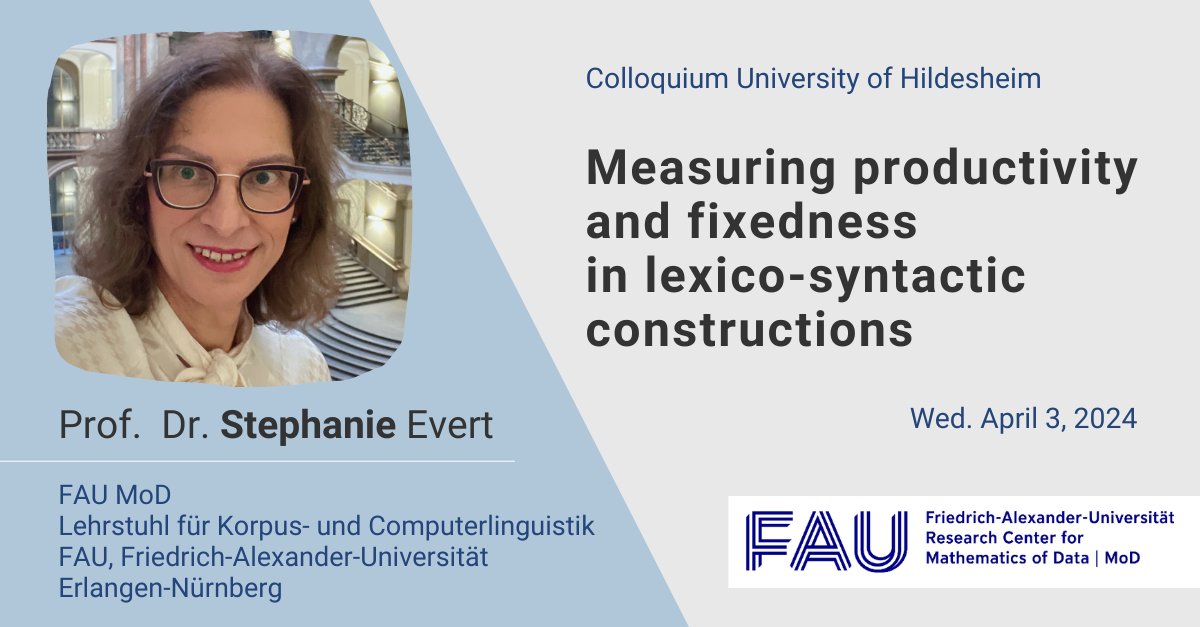On April 3, 2024 our FAU MoD member, Prof. Dr. Stephanie Evert gave a colloquium talk on “Measuring productivity and fixedness in lexico-syntactic constructions” at the University of Hildesheim (Germany).
Abstract. In cognitive linguistics, constructions are understood as pairings of form (i.e. a lexico-grammatical pattern) and meaning (as a parameterised function if the pattern contains variable elements), which constitute the fundamental building blocks of speakers’ linguistic knowledge. Between the extremes of purely syntactic constructions (such as the ditransitive) and purely lexical ones (individual words or multiword units), a large part of constructions fall somewhere in the middle of the lexis-grammar continuum. They often consist of multiple lexical and grammatical elements, which range from completely fixed lexical items to highly variable slots.
In this talk I argue that the variability of slots in a lexico-grammatical pattern forms a cline ranging from complete fixedness to full productivity. This cline cannot be quantified by a single integrated measure, but is a combination of three distinct, but overlapping aspects:
(i) fixedness is quantified by the frequency of an element (or rather, its conditional probability given the other items in the lexico-grammatical pattern);
(ii) at the opposite end of the cline, productivity is quantified by type-token measures and interpreted with the help of statistical LNRE models;
(iii) in the middle ground between productivity and fixedness, statistical association plays a central role in identifying salient, semi-fixed lexical items.
These methodological considerations are illustrated with a case study on shell noun constructions such as “It is a fact that you will have to listen to the entire talk.”
• Slides
* Photo by Glasow
_
Don’t miss out our last news and connect with us!

